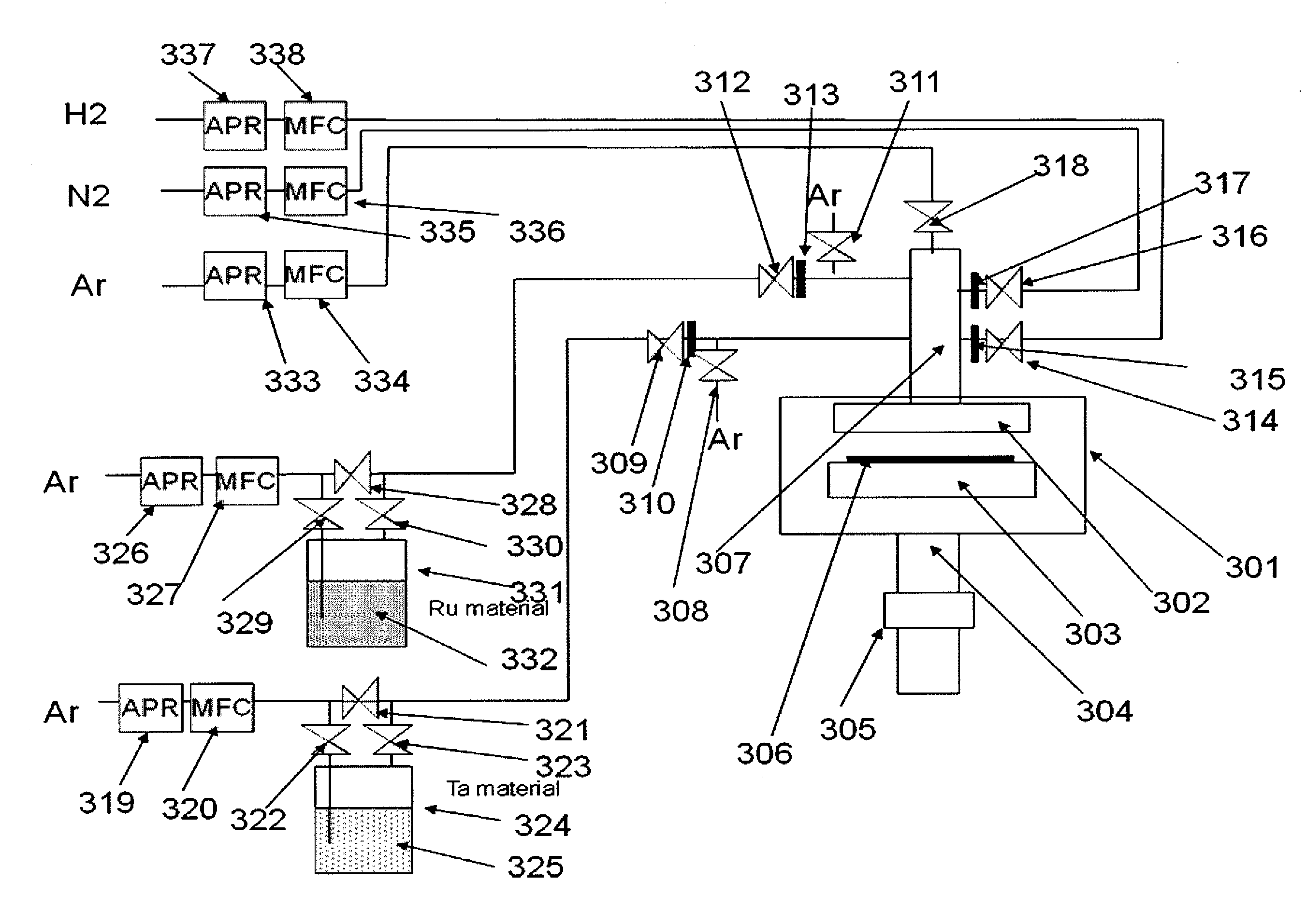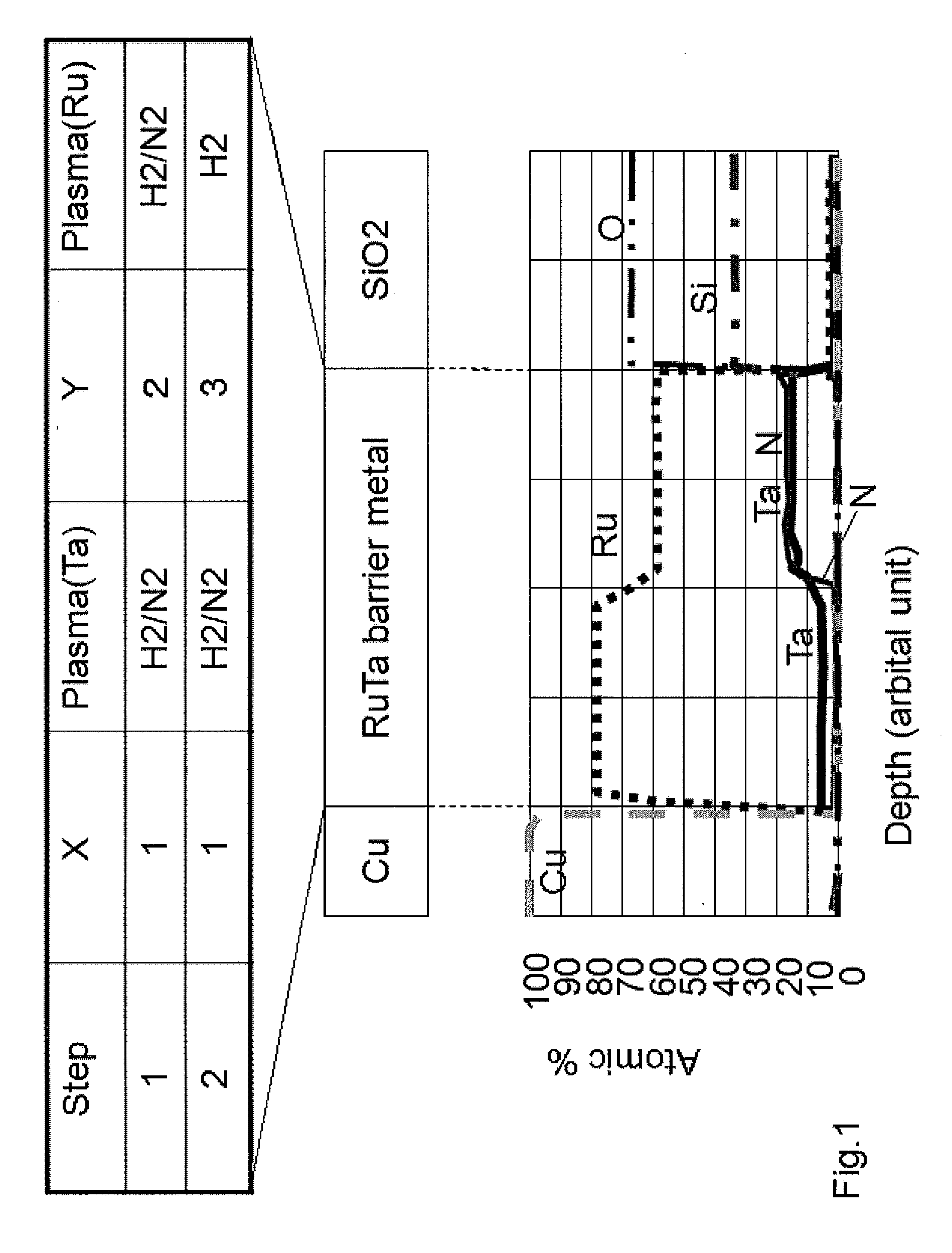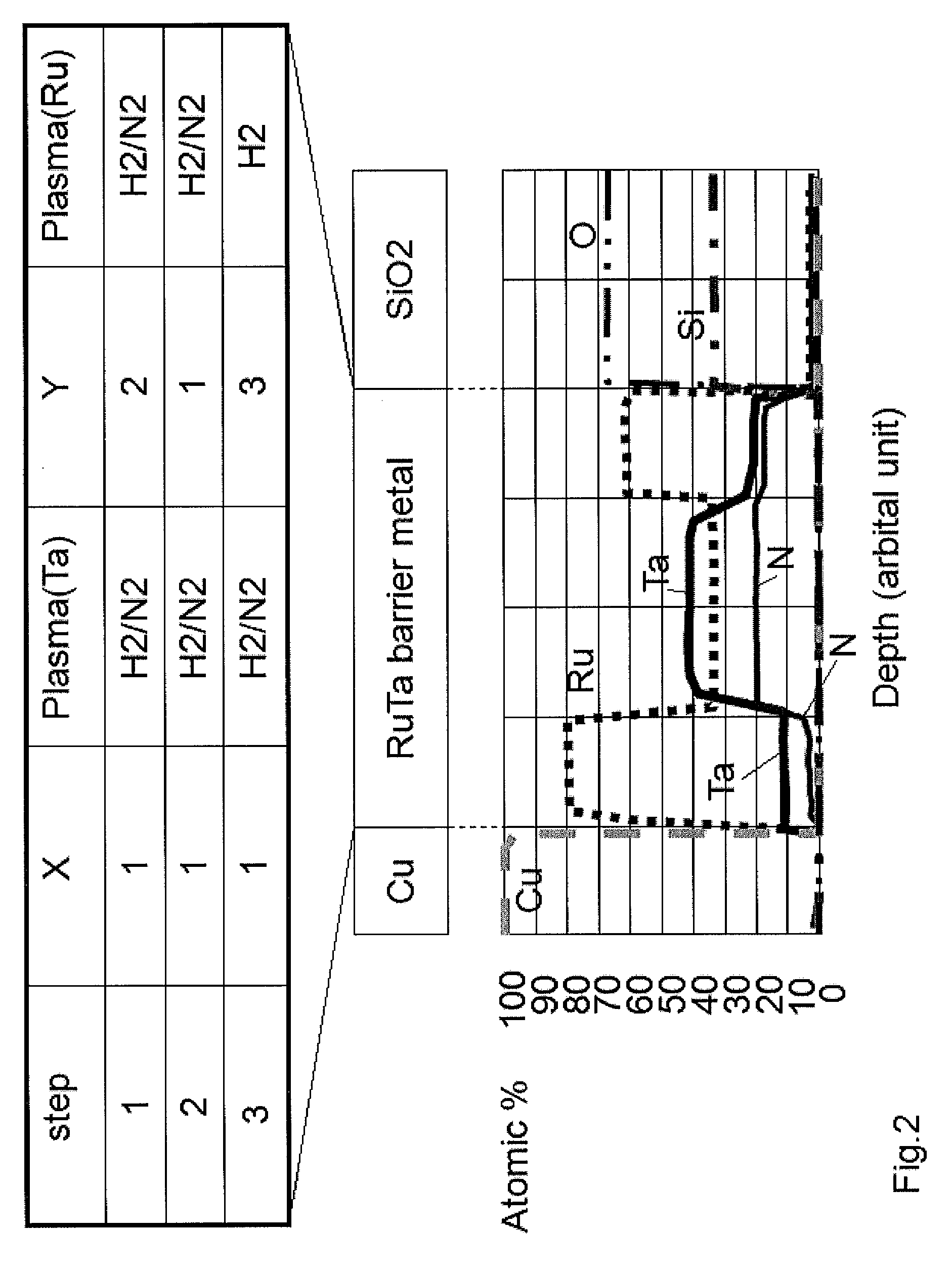Atomic composition controlled ruthenium alloy film formed by plasma-enhanced atomic layer deposition
- Summary
- Abstract
- Description
- Claims
- Application Information
AI Technical Summary
Benefits of technology
Problems solved by technology
Method used
Image
Examples
example 1
[0204]A specific example where the process in FIG. 1 is implemented using the apparatus shown in FIG. 4 based on the process sequences shown in FIGS. 5 and 6 is explained.
[0205]A Cu wiring is formed according to the process shown in FIG. 7 in a Cu wiring forming process based on dual damascene structure. Silicon substrates having a device that has been processed up to the state in FIG. 7(a) are treated using the apparatus shown in FIG. 10. A silicon substrate is set in a cassette loader 501, and a transfer robot 502 is used to transfer the substrate into a load lock chamber 503, after which the substrate is transferred by a vacuum robot 504 from the load lock chamber 503 into a reaction chamber for plasma atomic layer deposition 505. The next substrate is transferred to a reaction chamber 507, and the subsequent substrate is transferred to a reaction chamber 508, to allow the process to be implemented in a similar manner. The substrate transferred to the reaction chamber 505 is plac...
example 2
[0209]A specific example where the process in FIG. 2 is implemented using the apparatus shown in FIG. 4 based on the process sequences shown in FIGS. 5 and 6 is explained.
[0210]A Cu wiring is formed according to the process shown in FIG. 8 in a Cu wiring forming process based on dual damascene structure. Silicon substrates having a device that has been processed up to the state in FIG. 8(a) are treated using the apparatus shown in FIG. 10. A silicon substrate is set in a cassette loader 501, and a transfer robot 502 is used to transfer the substrate into a load lock chamber 503, after which the substrate is transferred by a vacuum robot 504 from the load lock chamber 503 into a reaction chamber for plasma atomic layer deposition 505. The next substrate is transferred to a reaction chamber 507, and the subsequent substrate is transferred to a reaction chamber 508, to allow the process to be implemented in a similar manner. The substrate transferred to the reaction chamber 505 is plac...
example 3
[0213]A specific example where the process in FIG. 1 is implemented using the apparatus shown in FIG. 4 based on the process sequences shown in FIGS. 5 and 6 is explained.
[0214]A Cu wiring is formed according to the process shown in FIG. 9 in a Cu wiring forming process based on dual damascene structure. Silicon substrates having a device that has been processed up to the state in FIG. 9(a) are treated using the apparatus shown in FIG. 10. A silicon substrate is set in a cassette loader 501, and a transfer robot 502 is used to transfer the substrate into a load lock chamber 503, after which the substrate is transferred by a vacuum robot 504 from the load lock chamber 503 into a reaction chamber for plasma atomic layer deposition 505. The next substrate is transferred to a reaction chamber 507, and the subsequent substrate is transferred to a reaction chamber 508, to allow the process to be implemented in a similar manner. The substrate transferred to the reaction chamber 505 is plac...
PUM
| Property | Measurement | Unit |
|---|---|---|
| Thickness | aaaaa | aaaaa |
| Thickness | aaaaa | aaaaa |
| Thickness | aaaaa | aaaaa |
Abstract
Description
Claims
Application Information
 Login to View More
Login to View More - R&D
- Intellectual Property
- Life Sciences
- Materials
- Tech Scout
- Unparalleled Data Quality
- Higher Quality Content
- 60% Fewer Hallucinations
Browse by: Latest US Patents, China's latest patents, Technical Efficacy Thesaurus, Application Domain, Technology Topic, Popular Technical Reports.
© 2025 PatSnap. All rights reserved.Legal|Privacy policy|Modern Slavery Act Transparency Statement|Sitemap|About US| Contact US: help@patsnap.com



